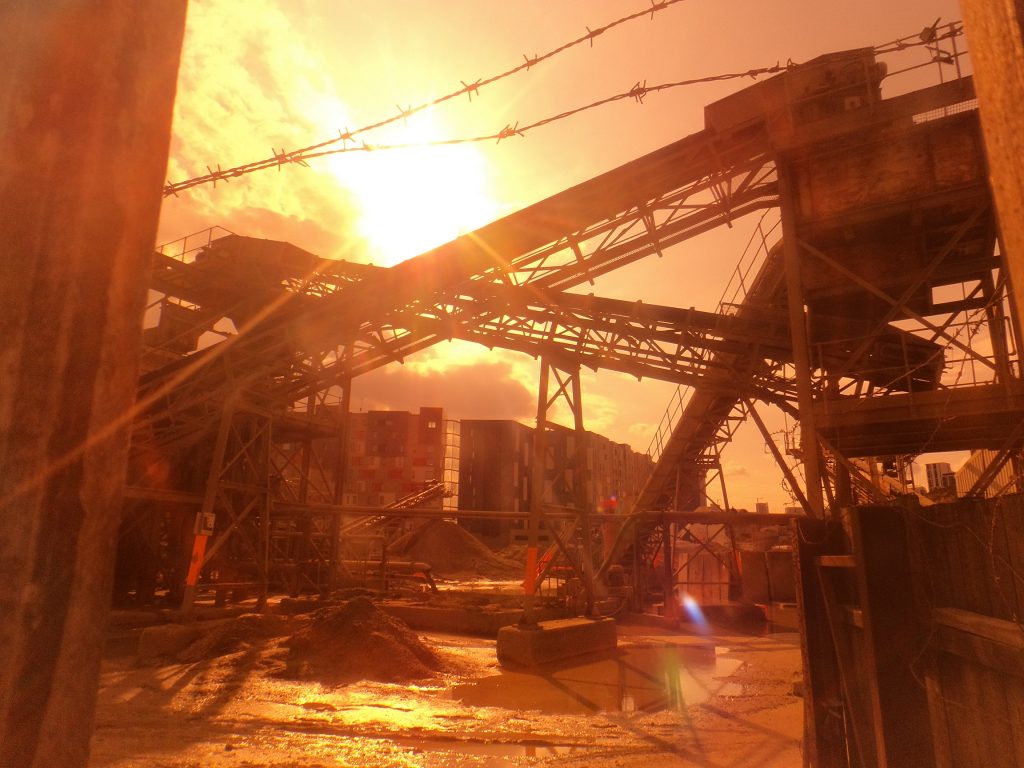
Greenwich Peninsula
In the film Blow-Up (1966)[i] photographer (David Hemmings) becomes consumed by some enigmatic photographs he has taken in a park – do they show a murder in the background or not? Repeatedly, he enlarges the photographs looking for meanings or clues, in the process deconstructing both the images, and, inadvertently, the context in which he exists.
All the long sections in italics below this introduction, are taken from two central chapters[ii] of a literary/ecological thriller, A Bruise on the Snow. Though deprived of its characters and plot, in a manner less abstract but perhaps not dissimilar to that of Blow-Up, the fiction of the novel is partly developed through the enlarging of certain topographical and historical elements encountered on an actual London walk which took place towards the end of August last year.
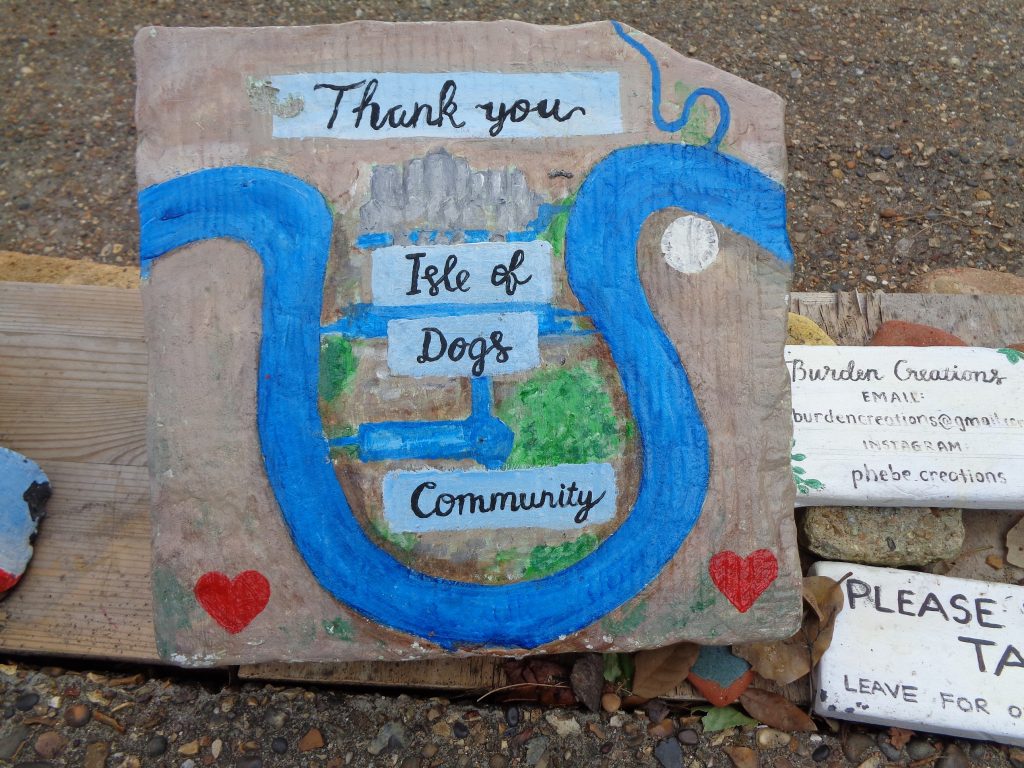
22nd August 2021
Starting and finishing at Conway Road behind Plumstead High street, this walk took me and my eldest son up to Plumstead Common, west to Barrack Field and Charlton Park then north to Maryon Park – still identifiably the same place featured so heavily, wind swaying the tree tops, in Antonioni’s unforgettable film[iii].
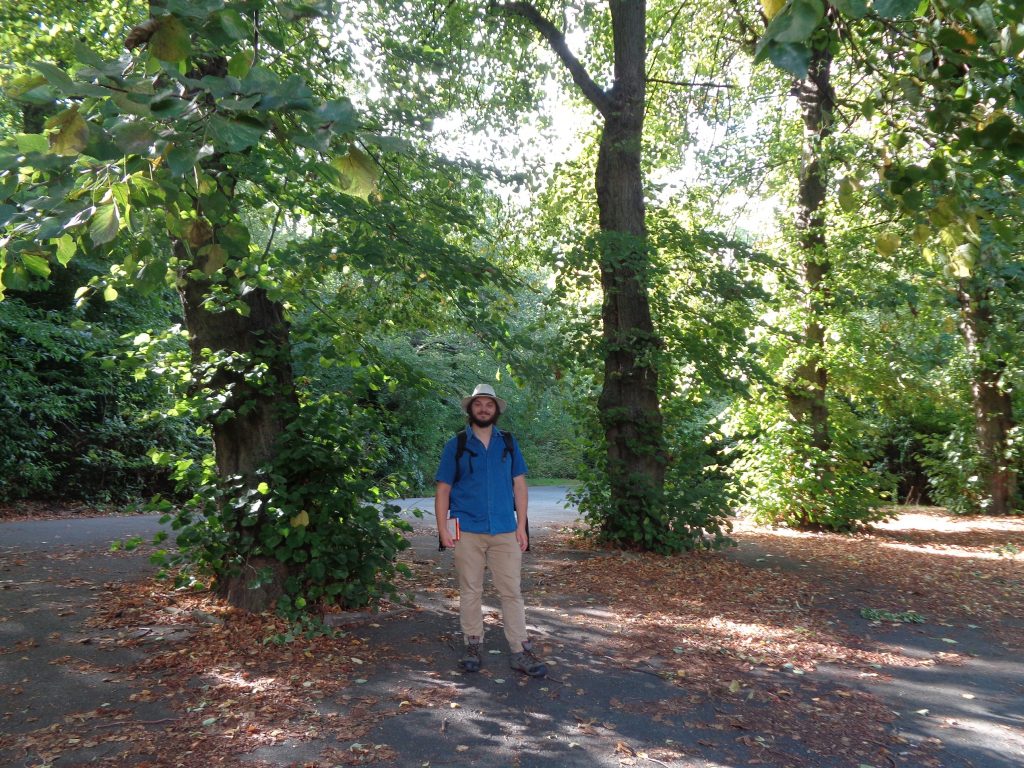
Joe at the Clevely Close entrance to Maryon Park. Although the nearby streets have all been rebuilt since Blow-Up (1966) the park remains worn yet recognisable. 22nd August 2021
Open to a myriad of interpretations, Blow-up (1966) continues to get richer every time I watch it – and I must have seen it countless times since the mid-70s. At one pole, a humorously ruthless skewering of an increasingly shallow and self-centred society, the film also works as a subtle, existential touchstone.

Plumstead Common Road, 22nd August 2020
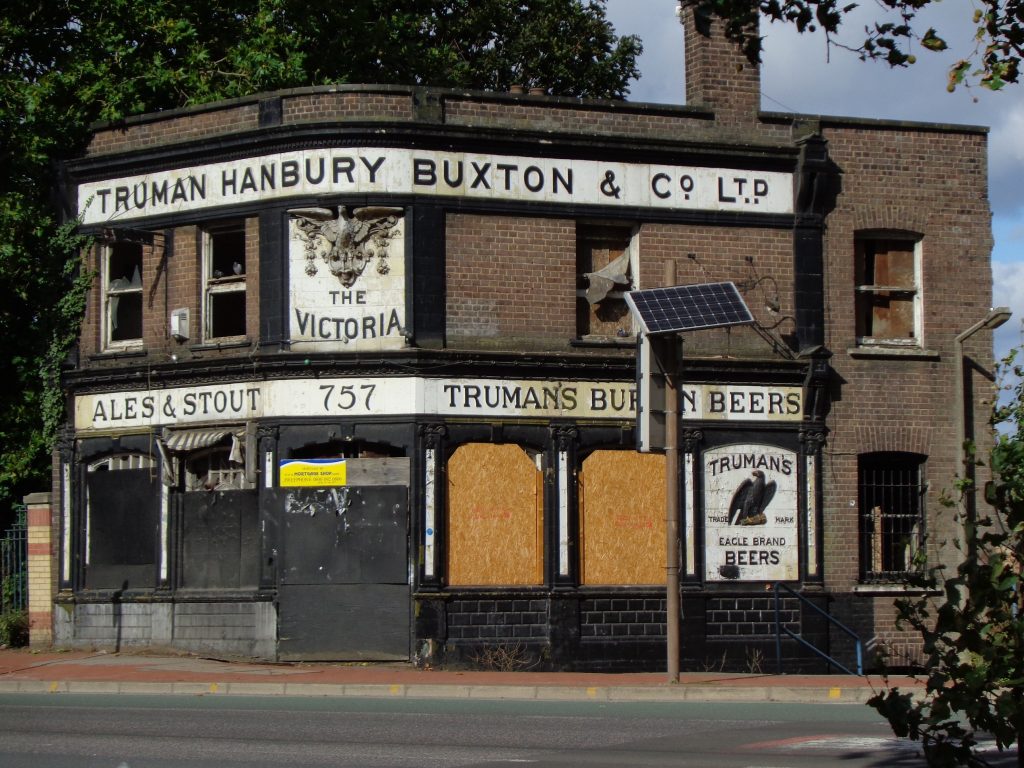
Leaving Maryon Park and passing the abandoned Victoria on Woolwich Road, lack of time obliged us to jump a Greenwich-bound bus in an attempt to recover our rough schedule.
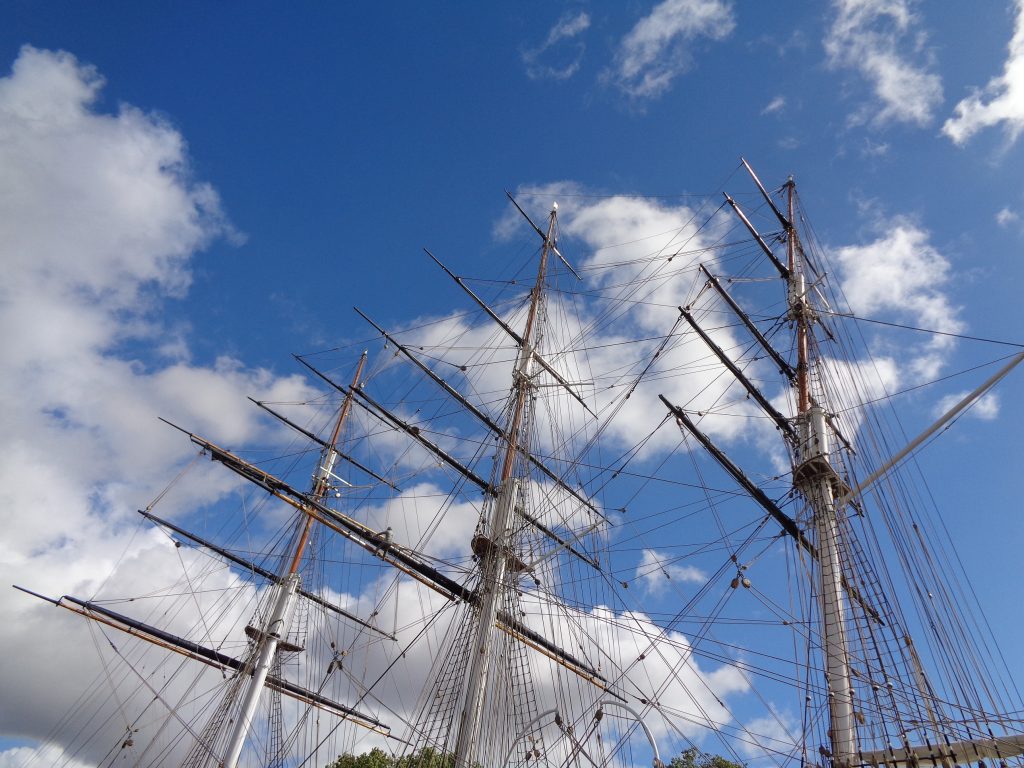
Northwards beyond the Cutty Sark, we spiralled down the 100 steps into the deep riverbed tunnel[iv] whose echoing course dips unsettlingly near the middle. Towards the northern end, the tiled passage narrows between an obvious steel liner – reinforcement added after a High Explosive bomb exploded on the foreshore 12 yards from the river wall, directly over the line of the Tunnel, in September 1940[v]. Shortly afterwards, we toiled up the 87 steps to Island Gardens and the Isle of Dogs – originally known as Stepney Marsh[vi].
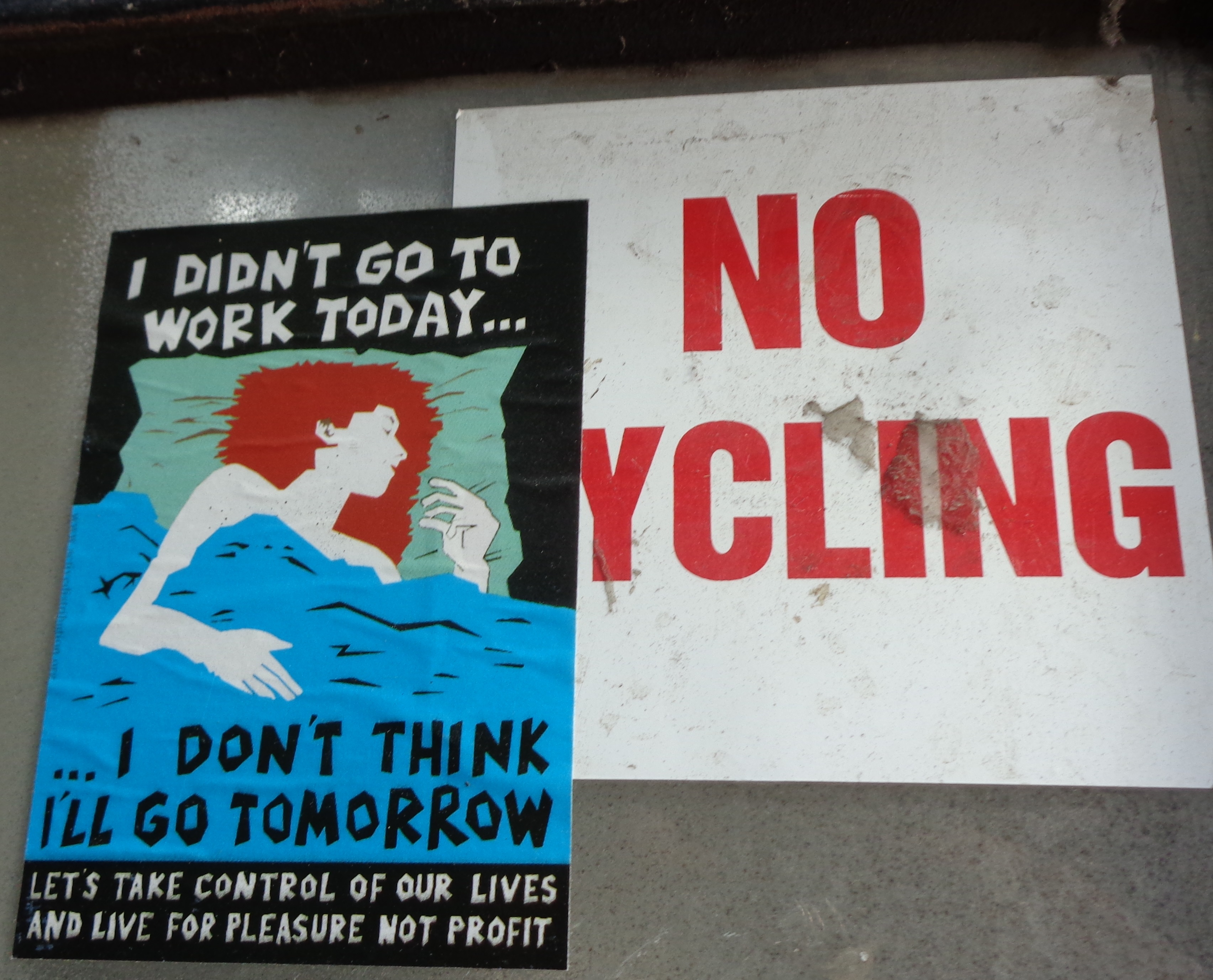
Lockdown philosophy we would be wise to extend[vii]. . . Greenwich Foot Tunnel entrance, August 2020
North of Cubitt Town, we inadvertently encountered another film location at The Gun, Coldharbour, off the A1206 – not that we knew it at the time. The curious serendipity only occurred a week later when totally by chance, I happened to watch The Passing Stranger (1954) and suddenly recognised the pub and the street. By luck, I’d taken a photo from a viewpoint which almost matched. We seriously considered going in The Gun, but with its proximity to Canary Wharf, assumed the prices would be too high for a pint we had insufficient time to savour.
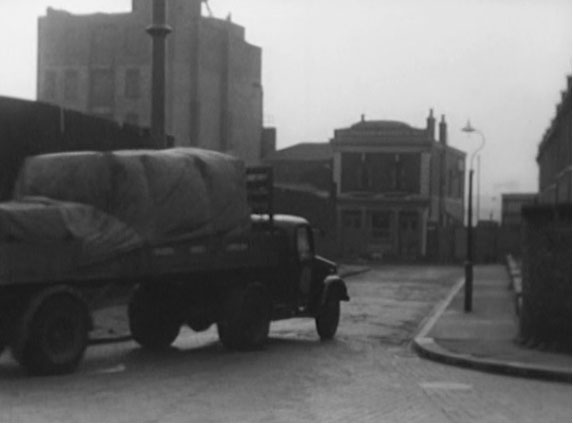
Screen capture from The Passing Stranger, 1954 (61.25)
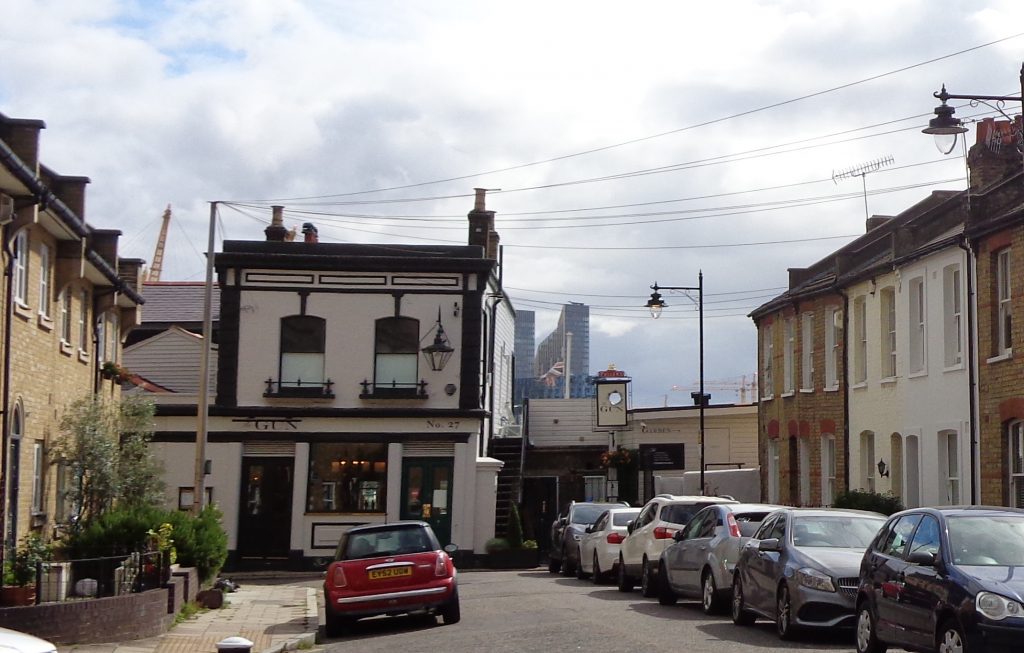
The Gun, Isle of Dogs, 66 years on, both of us tempted to have a drink on the hidden river terrace . . .
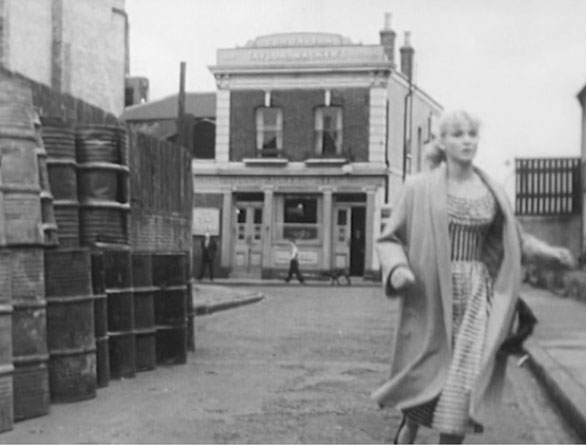
Screen capture from The Passing Stranger, 1954 (41.01) Diane Cilento runs from the pub.

View from the river of the pub terrace – presumably taken from a jetty or boat? 1954
From Canning Town, stopping to eat a picnic in the Thames Barrier Park we strolled east to Silvertown and North Woolwich, catching the ferry back to Woolwich and returning uphill to Plumstead. Weather and light for the whole day remained perfect. Hot, sometimes overcast, but with clear spells and breezes. One of my most enjoyable London walks.
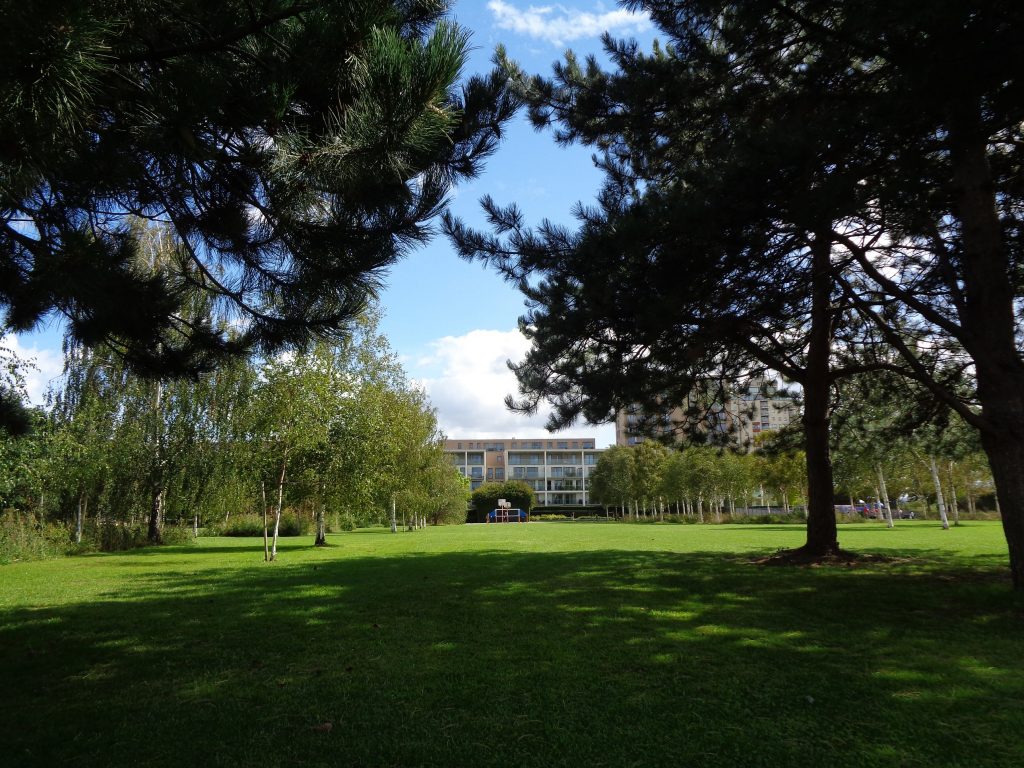
The idyllic and utopian Thames Barrier Park on the 22nd August 2020
* * * * * * *
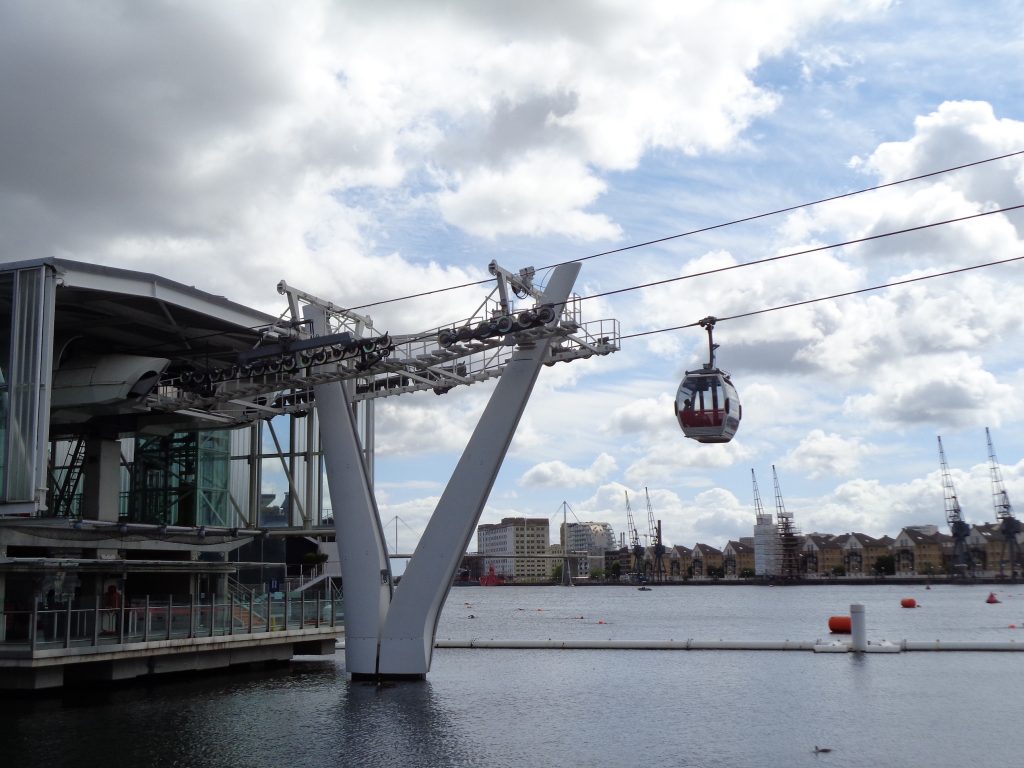
Emirates Royal Docks Terminal. Another cable car arrives from the Greenwich Peninsula.
.
The following extracts are from A Bruise on the Snow (2021):
The Royal Victoria Dock near Canning Town must be so different, even from how it was back in the late twentieth century. Now, the entire area seems to have become a playground, a futuristic fantasy exceeding H.G. Wells’ most utopian and egalitarian dream. Or is the texture closer to Huxley’s Brave New World? The boisterous voices of privileged young men and women encased in wetsuits, ring from the green lawns adjoining alternative dockside cafes. Cable cars skim down from the sky passing over the enlivening flapping of bunting, water-skiers and coloured buoys, to land or rotate through their cantilevered airline terminal – its projecting neo-Moderne. But has the spirit of Seurat’s pointillist bathers on the Seine[viii], of the pre-Nazi, People on Sunday[ix], of William Roberts’ friendly tubular robots[x], been overruled by the blandenising of technology, branded individualism and the insulation of money? The revival of so-called wild swimming perhaps at least indicates a countering asceticism . . . unless this new form of the old, with extra gear and an added philosophy, proves a passing fad? In the dock, the swimmers seem as regimented as the usual lane exercisees within the usual leisure-pool tanks of chlorine.

Emirates Air Line cable cars coming into land over The Crystal, Canning Town/Silvertown.
Following the wide, squared-stone end of what used to be industrial water, imagining all the heavy manual toil: the workers that must have worked themselves to death here. What would they think? Would they be amazed? Was this result a tribute, or an insult? And how do their descendants feel, priced out or surviving grimly in the tower blocks and estates at distant margins. This playground is not for them. Their anger is my anger. I just followed the wrong course.
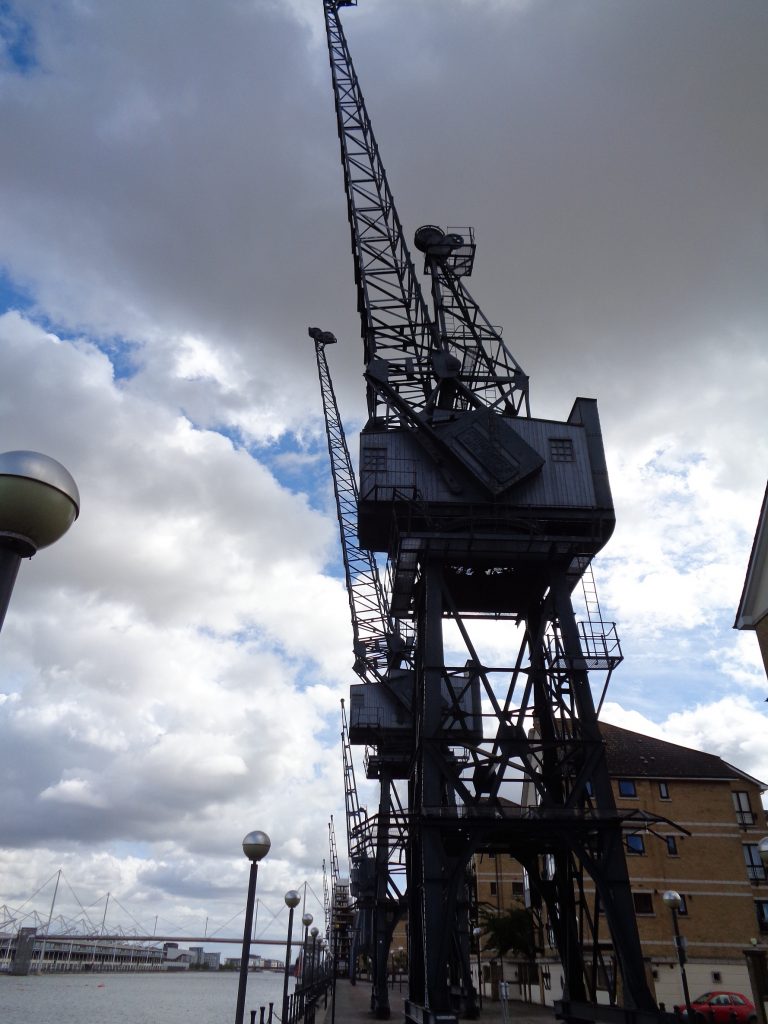
All along the southern rim of the dock, many of the old cranes have been preserved. They have become sculptures. Despite the power and force inherent in their form – greater than any sculpture – they’ve been reduced to the decorative. Commanding but neutralised. Somehow, they look like they can’t ever have done very much. Thank you, thank you, thank you, for preserving us, they appear to meekly bow. Triumphant and sad at once. All in line. The way they stand implies they’d been diecast in one solid piece. One piece that could never have moved. Or were they plotting? I hope so.
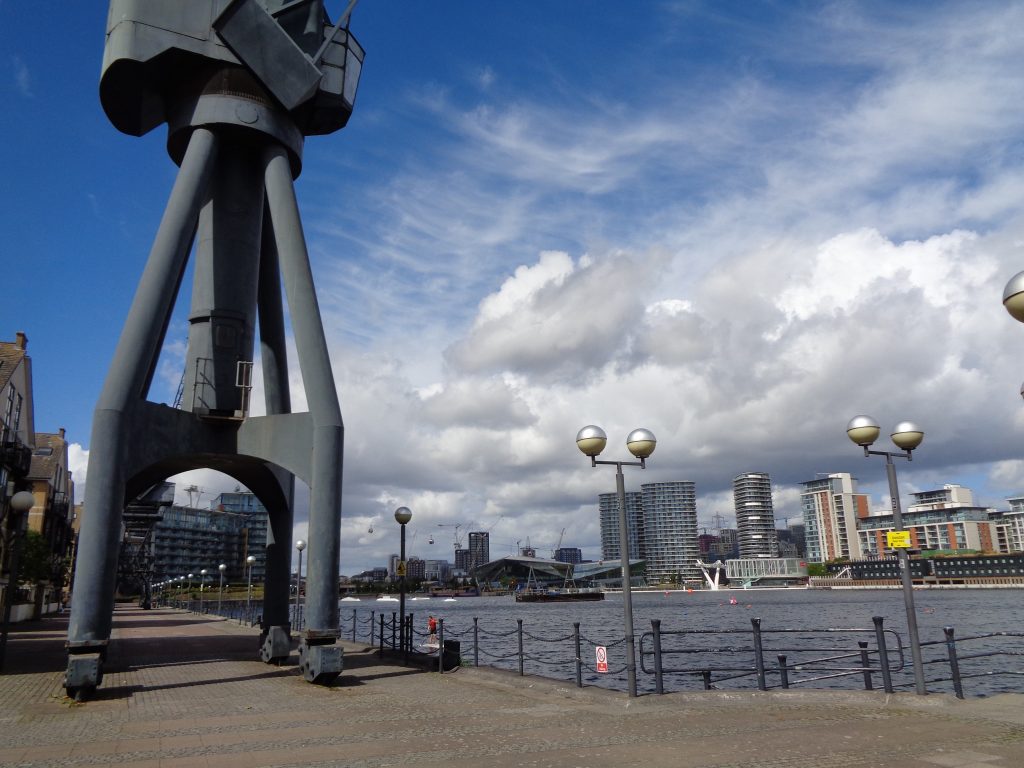
“Thank you, thank you, thank you, for preserving us . . .” Royal Victoria Dock, August 22nd 2020
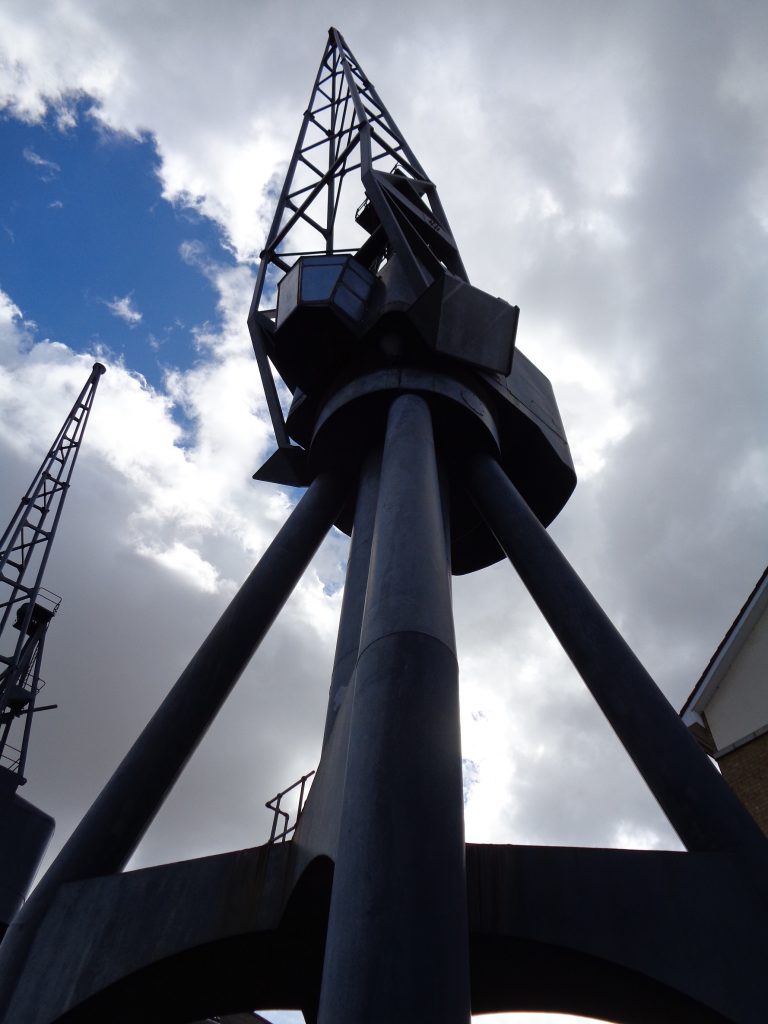
Die-cast crane, August 22nd 2020
Pausing at the side of the North Woolwich Road, I looked both ways. But the dominating feature above my eyeline from right to left, was a long curving flyover of the Docklands railway. Intrinsically Things to Come, it’s smooth sweep was dreamlike. The road too was weirdly empty and bright amongst all the concrete and glass . . . and I’d lost the way, the exact way, to the Thames Barrier Park.
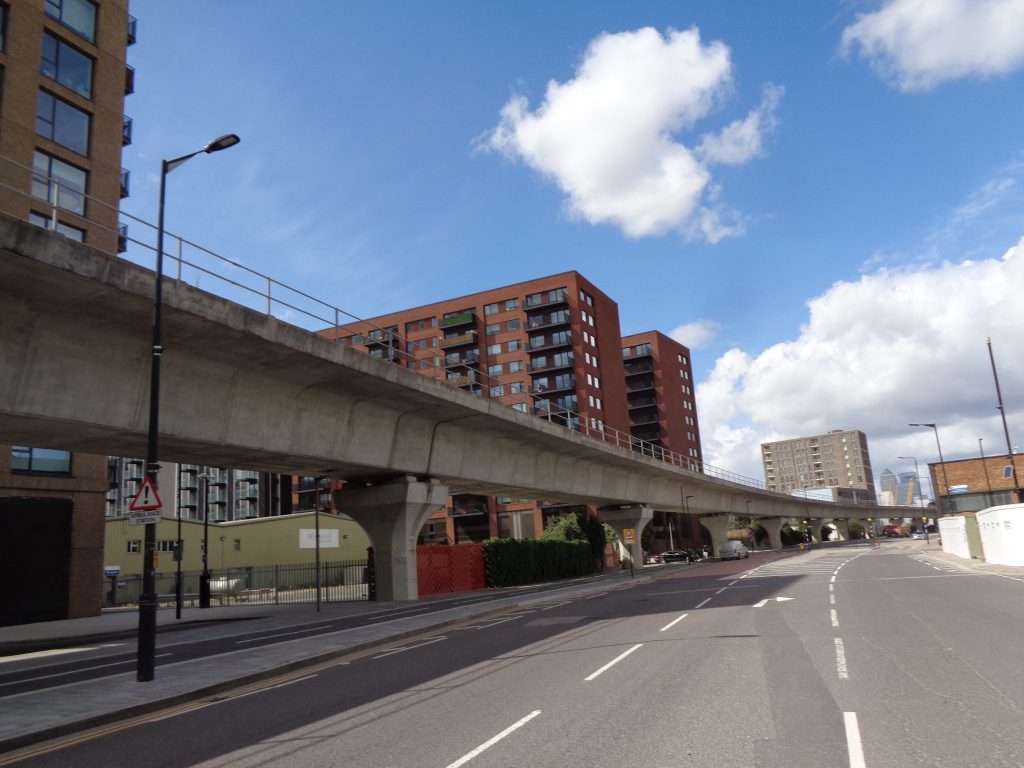
A1020, Silvertown, August 22nd2020
Whatever history of the park I might have read had broken into jumbled paragraphs. A venture towards the vaunted Millennium. Reclaiming toxic land. Its size in hectares. If this was accurate, somewhere in my mind it had always seemed irrelevant – notes from a lost journal discovered centuries later on a distant planet. Whether or not it was envisioned partly to disguise the embankment which extended the flood barrier northwards, the park had arrived and always existed at a destination of its own. I wondered if property by the river to the west had a higher value than that to the east, given the barrier’s theoretical protection? North Woolwich and Beckton could drown.
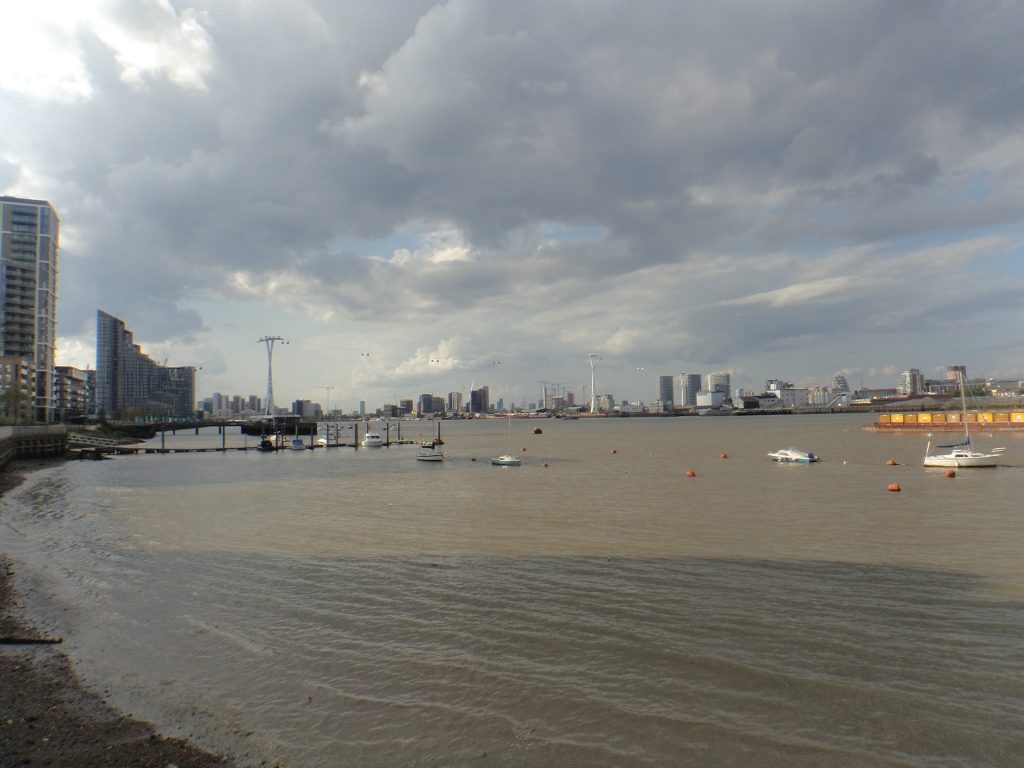
The Greenwich Peninsula – protected by the Thames Barrier . . . but for how long? 2nd August 2019
But which was the right direction? I felt confused, as if drugged, stumbling on in the excessive light. Under the flyover, was that Starboard Way or Barrier Point Road?
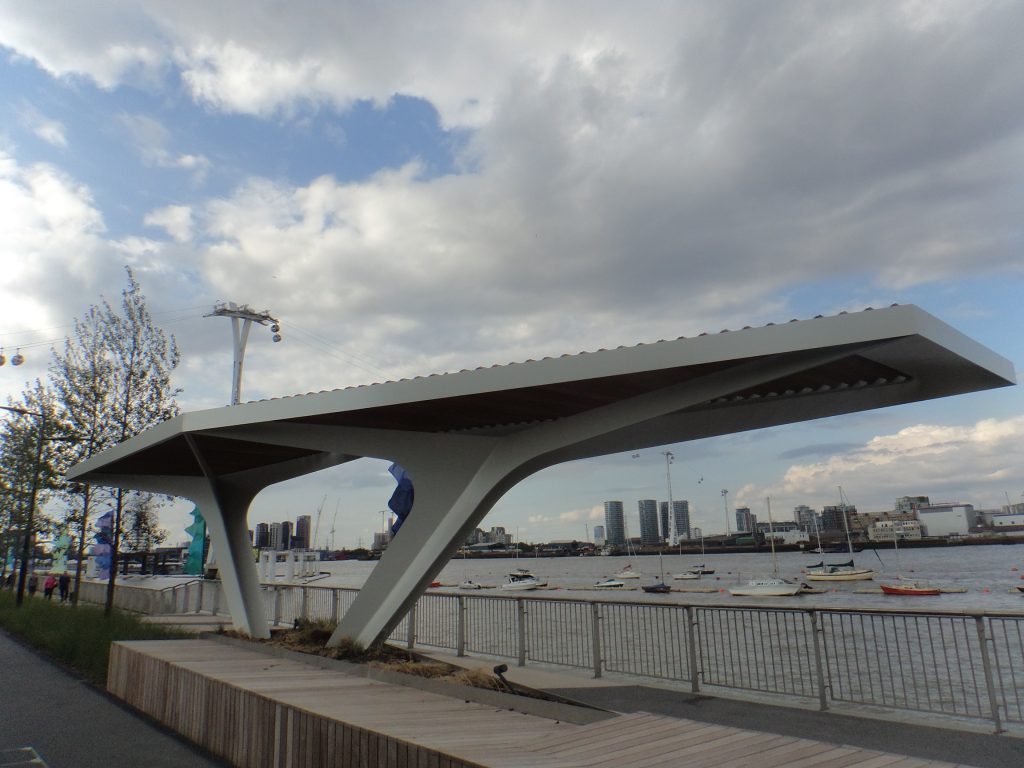
DSC08715 Retro shelter, 2nd August 2019
Isolated amongst the high apartments and offices, paved empty courtyards were punctuated by the chess pieces of shrubs locked in by high-bricked flowerbeds. The meaning shifted as if I watched from above. A diagonal pawn unable to turn back. Imperceptibly, the indifferent landmarks were forming some terminal labyrinth. I felt I was being surveyed by impersonal eyes that cared for nothing. Some of them my own. But these eyes would have no consciousness behind them. I must become less than a shadow in the overexposure.
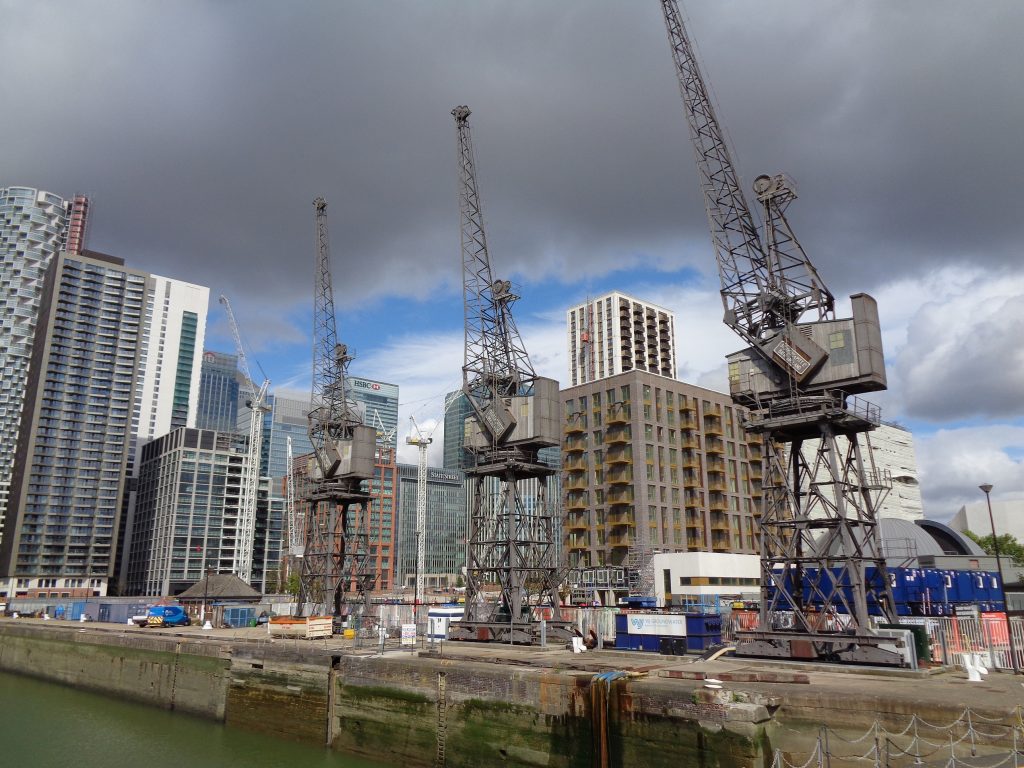
West India Dock, from South Lockside, August 22nd 2020
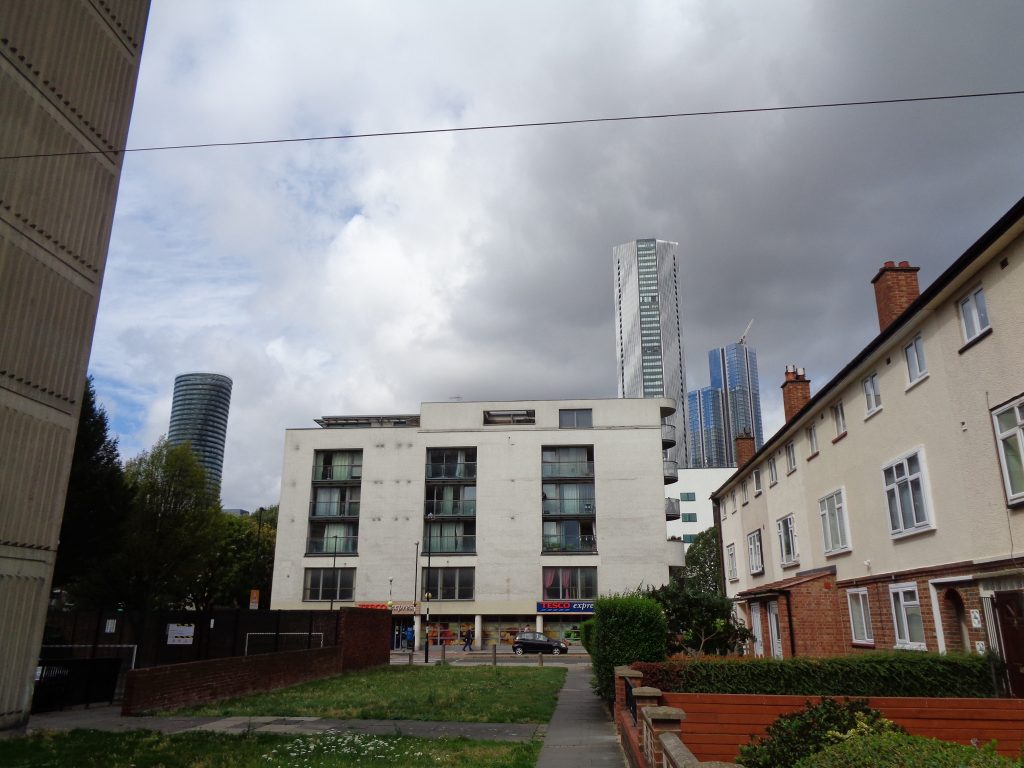
Cubitt Town, August 22nd 2020
Long ago in the distance, I’d passed one of those determined corner shops – bold nugget of reality. Tins and packets, drinks and freezers, magazines and papers. Its crammed pragmatic shelves, its trailing commerce, its insolent sign . . . That was the last earthbound thing in memory, left behind down shape-shifting avenues that had formed since, complete with junctions and woods. Light dismantled so easily the labyrinth of programmed cares. The sweep of the flyovers and their moving shuttles had descended into prehistory. The sky above and the canyon sides were all opening. Every solid surface fell away, all its restrictions and fears, every trace of my exhaustion disappeared. Beyond compass and clock, the pure light expanded . . .
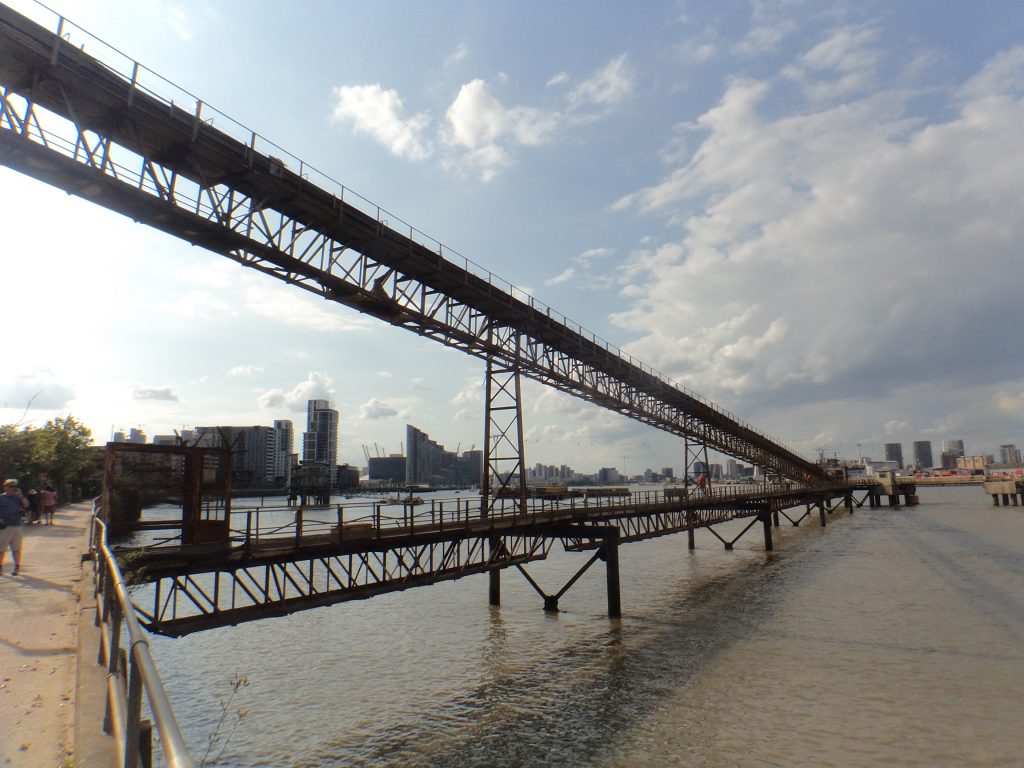
DSC08705 Angerstein aggregates loading wharf, 2nd August 2019
Though I knew the park from before, everything is stronger today. You never fully know what you have until it’s gone. If it doesn’t sound morbid, it felt as though I was seeing the place from after my death. It was open to full appreciation. It was full of beneficence: soft sympathetic laughter for our transience. It was neither past nor future but here and now forever. Time had ceased to exist. It also had the look of being appreciated – as if that is the ultimate state: to love things so much that they become you and you become them. No doubt the fact that it was so underpopulated added to the utopian air. It felt as though the whole area had been built on the shores of a wide reliable river on a new planet. A pristine Earth without the human race to despoil it. We’d learned our lessons, this time we would be careful. We would gently shape without destruction, control our greed and our population. There will be nothing wrong with the human addition, so long as the colonists don’t impose too much. In reality this cannot be so, but some perfect and relaxed projection formed around me, an ideal shaped from the river’s light. Here, colonists had brought from Earth things no one would be likely to object to. Between spacious, airy buildings, grew areas of plants with different purposes, to eat, to heal and to be bright. For their scent, their colour and their shade. Things to cherish and never abandon. There were hedgerows like waves and the idea of a bandstand.
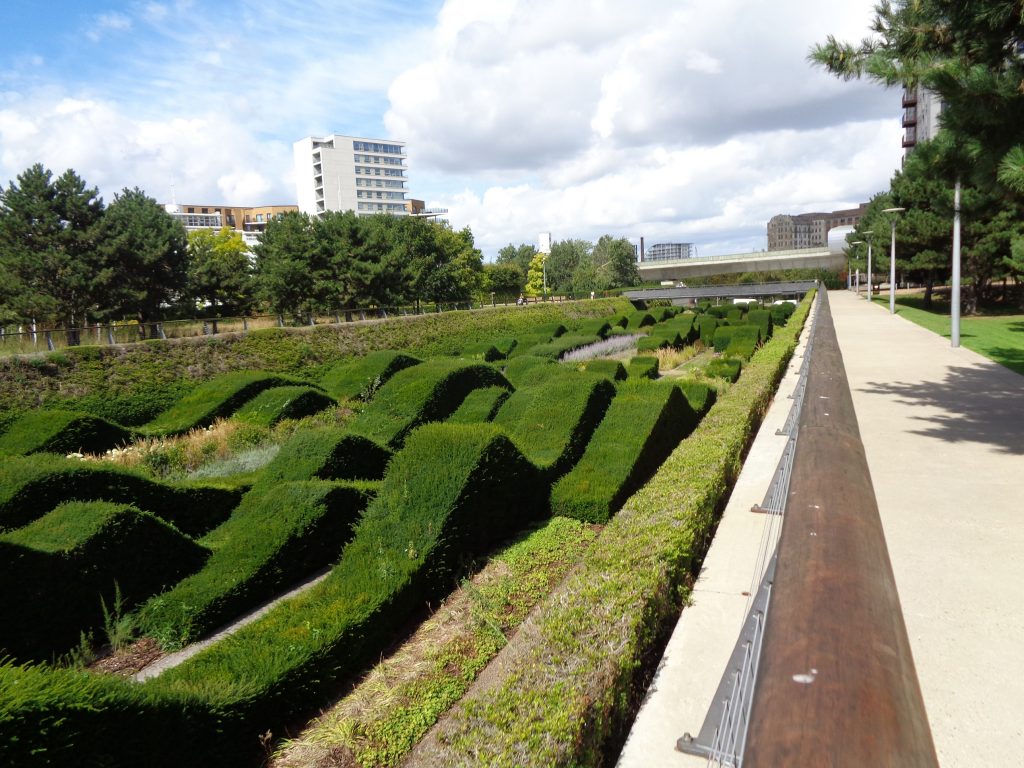
The “valley of hedges, the green dock as it was named – which I’d always assumed was somehow part of London’s flood defences?”[xi] August 22nd 2020
Back in pragmatic reality, there was a health clinic at the top end of the park, homage to the post-war ideal of welfare perhaps – not likely to heal using a golden fleece. Meanwhile most of the tall buildings around are probably offices. Nevertheless, it was possible to believe that the park was communal garden for all the new and happy residents that overlooked it. A garden they were more than pleased to share.
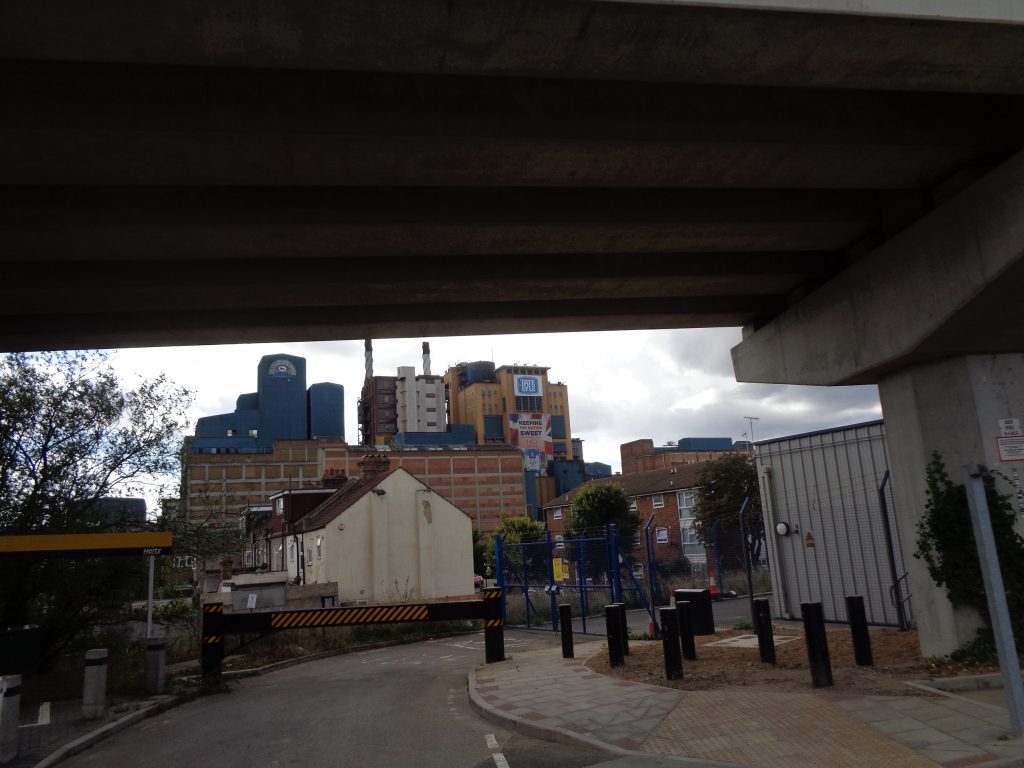
Tate & Lyle sugar factory, North Woolwich, August 22nd 2020
Is it true that we all have three or four different personalities struggling within us? We want to be whole but can’t manage it. Personally, I’ve always felt some kind of unity. I had moods of course, but still there remained an overruling personality – and I don’t think it was the maniac type . . . Unless the maniac is more common than we think and can be usefully harnessed – in science or art, in politics, “getting on” or so much else that appears constructive. But how many of the maniac types are left to take it out on their families or ultimately upon themselves – whereupon they split into a zillion pieces.
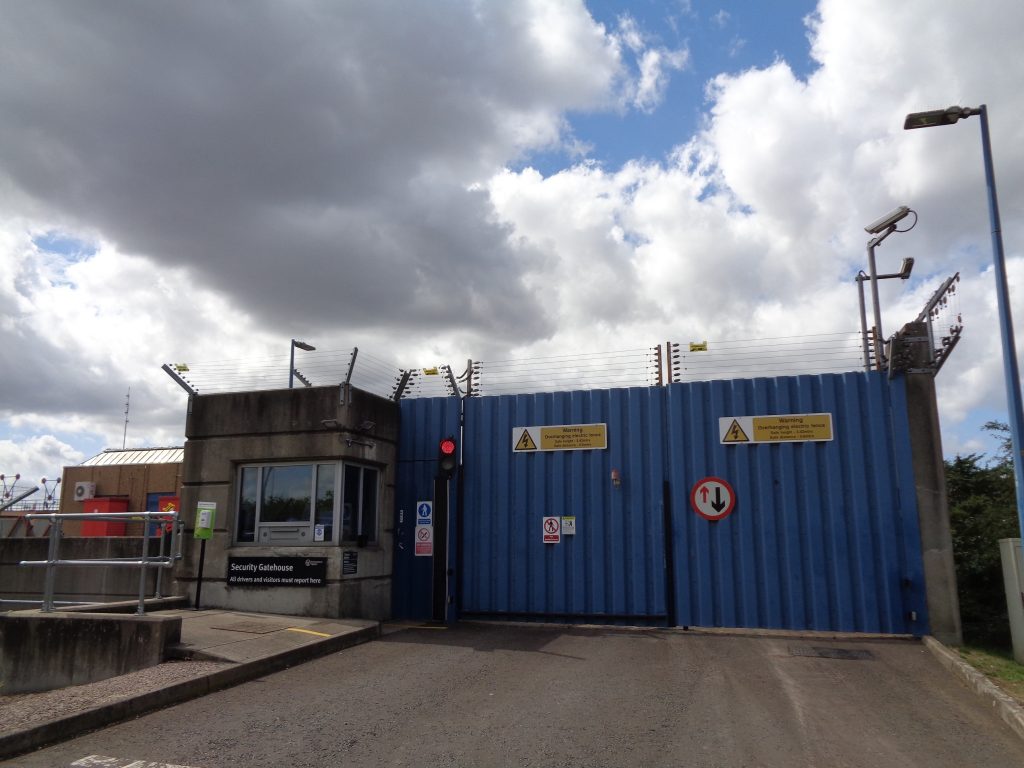
As yet there is no direct route along the riverbank east from the park. The area is all shut off by expensive developments or rotting factories, one or the other, they seem to intermingle nowadays, the new disease gradually overtaking the older. The barrier itself is still an impressive thing. Its chain of silver cowlings, blunt tooth castellations across the river, always ready to defy the sea – as least as it is for now. Sadly, it won’t be long before the water simply goes right over the top.
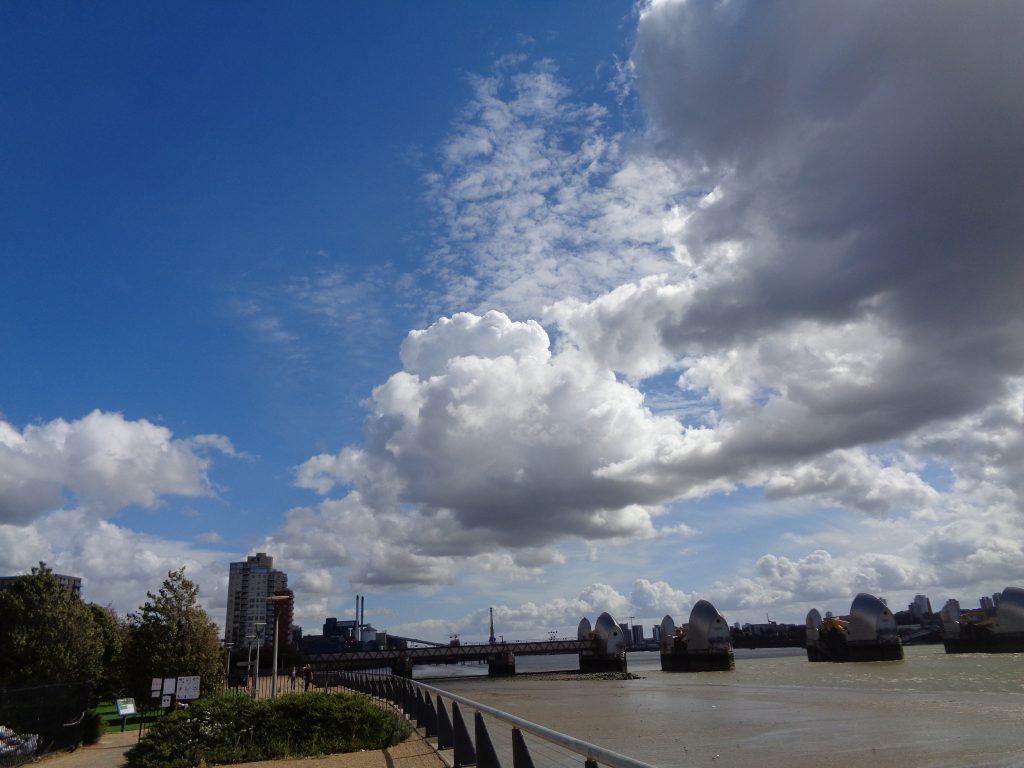
The Thames Barrier seen from the park which honours its temporary protection. August 22nd 2020
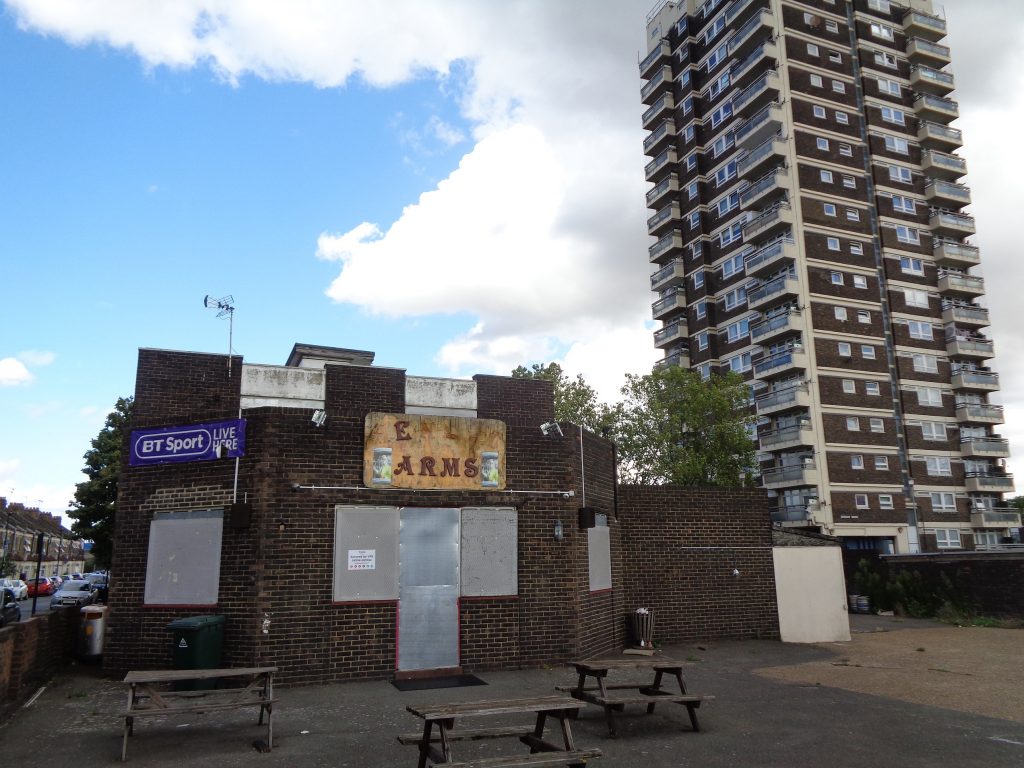
The Henley Arms, North Woolwich, by the A112 – a long way in atmosphere from its posh namesake.
Ending at the Woolwich ferry, I took the Ben Woollacott[xii] across the river. The ferry was a good way of losing anyone who might have been following or of becoming clearly aware of them. Only three other foot passengers came after me and anyone in a car arriving behind would have had to wait for the next. The queue was long.
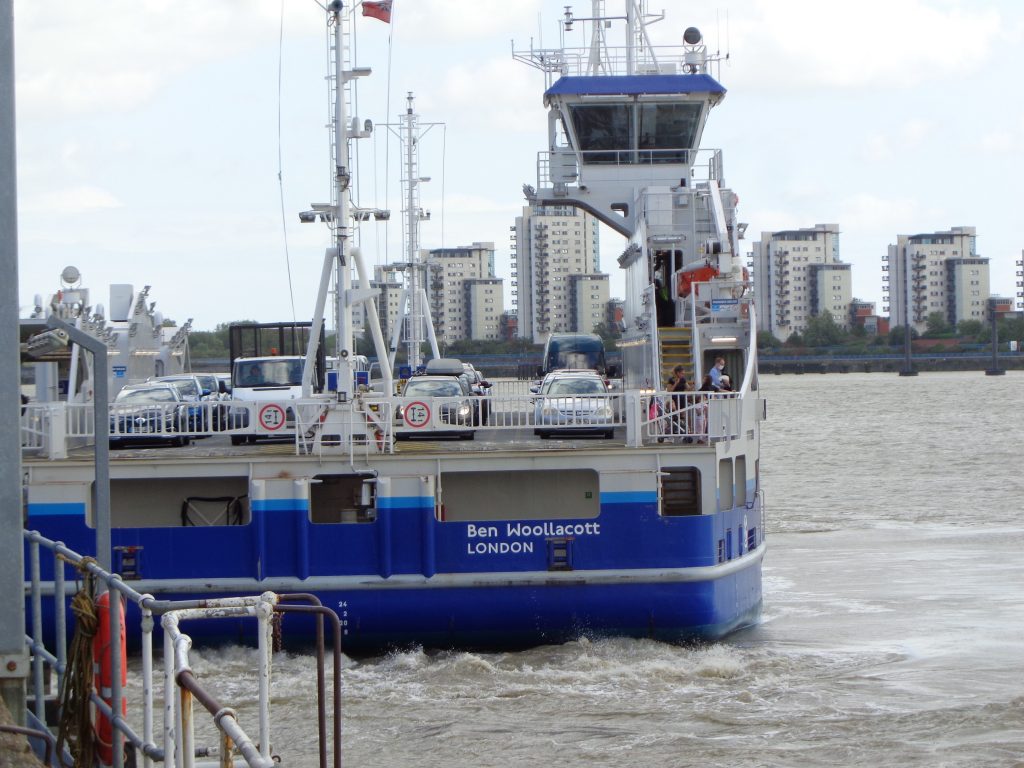
Confidently vanishing into Woolwich, I headed up towards Plumstead Common – a place Giulia & I had walked to several times and always liked. Doubling back through Maryon Park I caught a train from Charlton to London Bridge. After which, in case I should never see London again, I felt like walking . . .
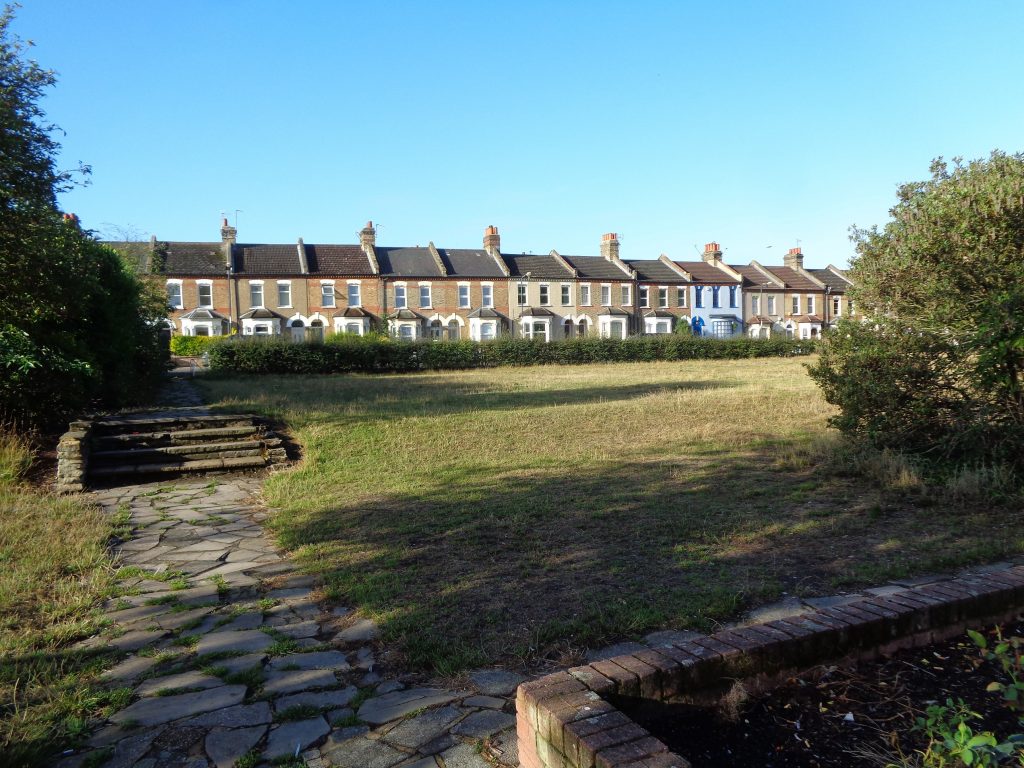
Plumstead Common, 20th August 2020
© Lawrence Freiesleben
London 2020 and Cumbria, June 2021
Despite numerous one-person exhibitions since leaving home at 16, Lawrence Freiesleben has always been out of step. His first ‘novel’ The Bow was unfathomable, his second, Maze End, spent much of its time in Paradise, and his third, Certainty Under the Rose, was set in the early 1980s!! The fourth, Estuary and Shadow, recently picked up after a long hiatus, has yet to escape from limbo . . . while A Bruise on the Snow, is almost complete.
Having lived in over 17 different areas of the U.K. from Devonshire to Northumberland, currently, with his wife and youngest children, he lives on the marshes of the river Kent in Cumbria.
NOTES
[i] https://www.imdb.com/title/tt0060176/
[ii] Chapter 14) Dissolution’s Figurehead / Tunnel Through to White and chapter 15) The London Borough of Newham, from A Bruise on the Snow (2021)
[iii] https://en.wikipedia.org/wiki/Blowup
[iv] https://en.wikipedia.org/wiki/Greenwich_foot_tunnel. Thanks to a school geography trip back in the 1970s, I’ve always credited Brunel with the design and building of this tunnel designed by Sir Alexander Binnie. Presumably our teacher muddled it with the much earlier Thames Tunnel https://en.wikipedia.org/wiki/Thames_Tunnel between Rotherhithe and Wapping? Or more likely, I wasn’t paying attention.
[v] At 5.30pm on the 7th September 1940. From layersoflondondon.org:
“The tile and concrete lining of the tunnel collapsed over a length of 30ft (10m). The Poplar shaft also took a direct hit from an oil-incendiary bomb, destroying the electrics for the lift mechanism. On the 8th September, as the tunnel began filling with water the LCC’s Chief Engineer visited the site personally and initially assessed the damage at £30,000. By 14th September, the entire tunnel was flooded, and it took ten days of continuous pumping to provide safe access and start clearing the debris. The initial emergency repairs comprised temporary shuttering, erected from October 7th, to contain leakage. Then in November and December, a series thirty iron collars, each some 21” wide, were bolted into position, unit by unit. This formed a ‘mini-tunnel’ c 8ft in diameter, within the larger tunnel.
Some eighty years later, the iron-collars are still in place, marking the location of one of first bomb-strikes of the main London Blitz that began on Black Saturday, 1940.”
[vi] https://www.islandhistory.org.uk/history/
[vii] Working hours should be capped, jobs shared around. Signing this petition would be a good start: https://www.change.org/co/p/uk-government-adopt-a-four-day-week-to-slash-uk-s-carbon-footprint/promote/thank_you
[viii] Seurat’s painting, Bathers at Asnieres of 1884 www.nationalgallery.org.uk/paintings/georges-seurat-bathers-at-asnieres showed workers bathing in the Seine – and was cleverly contrasted by A Sunday Afternoon on the Island of La Grande Jatte (1884-6) https://en.wikipedia.org/wiki/A_Sunday_Afternoon_on_the_Island_of_La_Grande_Jatte
showing the bourgeoisie as if on the opposite bank. In reality, the two locations (as defined more than a hundred and thirty years later) are almost opposite, Asnieres being only half a kilometre further downstream. The oik in the water really could be shouting abuse at the lady with the monkey!
[ix] The 1930 film jointly directed by Robert Siodmak and Edgar G. Ulmer
[x] Rush Hour of 1971, a good late example: http://www.englishcubist.co.uk/rushhour.html
[xi] from A Bruise on the Snow (2021), chapter 15 – The London Borough of Newham
[xii] https://en.wikipedia.org/wiki/Ben_Woollacott_(ship)
